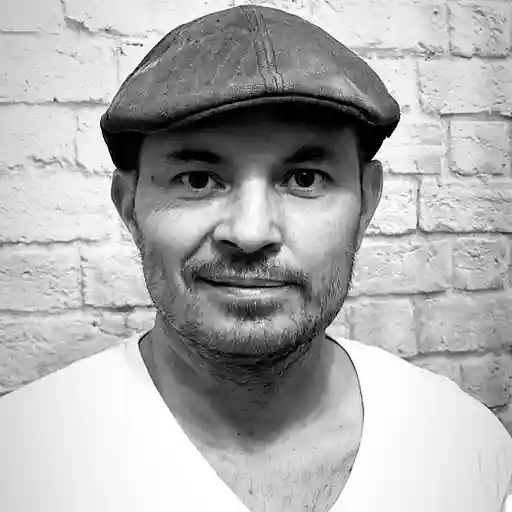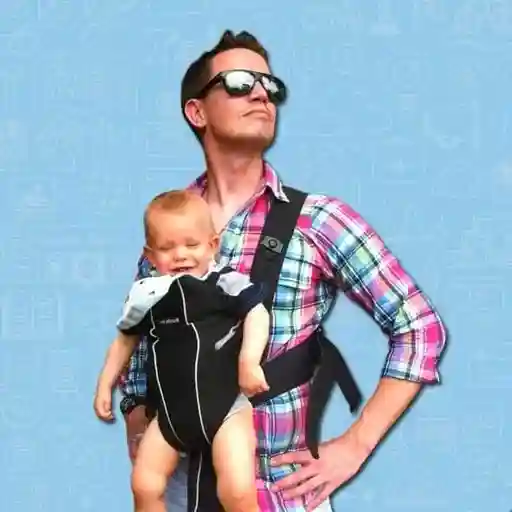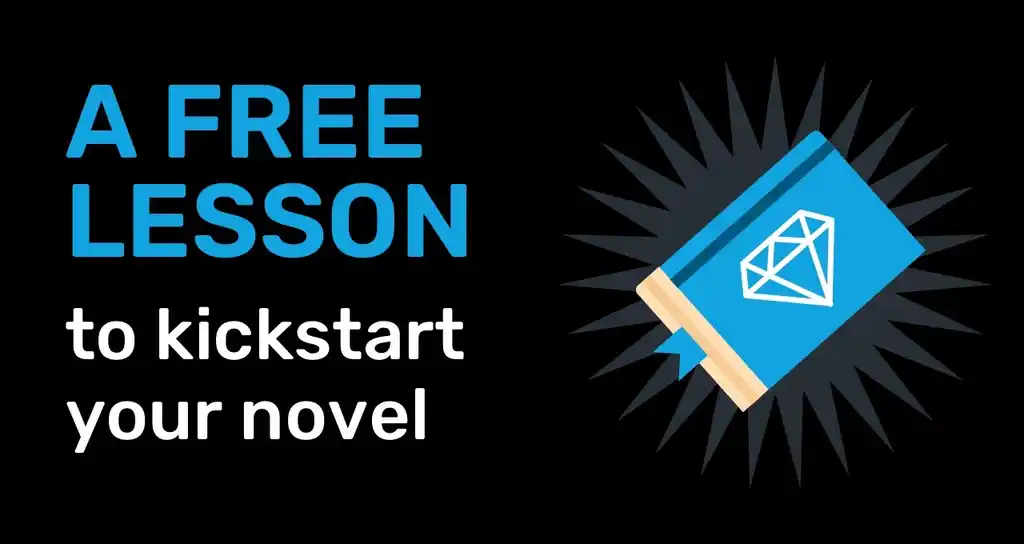This transcript has been edited for length and clarity. To work with Eleanor on your next book, head to her Reedsy profile.
I'm Eleanor Pilcher, and today I'll be giving a talk on how to leverage your social media, with a specific focus on TikTok. I'm a freelance marketing consultant — I've worked in publishing for about 10 years or so now at some of the largest publishers, including Big Five publishing houses like HarperCollins. I've also worked at digital startups like Canelo. I've seen all spectrums of publishing, from digital to hardback and paperback, and from massive budgets to no budgets at all — I've done it all really, and worked with quite a few big names.
BookTok
What is BookTok?
So to kick off with the BookTok phenomenon, let’s answer the age old question: what is BookTok?
Very simply, it is a community within the social media platform TikTok. TikTok has been around for quite some years now, but it really took off worldwide during the pandemic, and BookTok took off with it. Now, BookTok has branched out into a community with over 200 billion views, and over 38 million videos! You can find BookTok content by typing #BookTok into the search bar.
Many of the people who watch BookTok videos are readers who love stories; they may come from film and TV, they may be interested in publishing, or they may just be interested in history, which ultimately is a form of storytelling. That is kind of the core audience.
BookTok content creators are voracious readers, and as I'm sure many of us who are writers know, we are also voracious readers! Authors can very much be a part of the BookTok community, not only as consumers of content, but also content creators themselves.
If you’re interested in using TikTok to build your sales or author profile, there are two communities that I'd like to highlight in particular. I’ve already mentioned BookTok, but there’s also #AuthorTok, which is a community specifically for authors or writers — primarily for fiction and nonfiction writers. There’s also #WriterTok, which encompasses journalists and people that write for academic and educational publishers as well.
I would recommend using AuthorTok primarily if you are a fiction or nonfiction writer. There is a niche audience for everything on TikTok — if you’re a fantasy writer, you might want to create videos on #FantasyTok. If you love being abroad, or you live a nomadic lifestyle, you may want to talk about your travel experiences; you could build a following within the #TravelTok community, and that could help your books as well. Don't feel like you just have to be on BookTok talking about books.
Making content for BookTok
Let’s talk about the realities of TikTok. I am coming at this from the perspective of a publisher, but also as an author and a TikTok creator with more than 14 000 followers — I've seen TikTok across all spectrums and leveraged it in every way that a writer or publisher can. Learning how to use TikTok is going to take some work, but once you've mastered it (which should only take about three to six months), it’s just a matter of staying consistent.
TikTok is a very fast moving platform. The algorithm changes frequently — we never know when or how it changes, but your video views may spike or drop randomly, and that's usually because TikTok has changed something on their side.
We never know what they change, and that’s the same whether you are an indie author just starting out, or if you are a traditional publishing house with hundreds of thousands of followers — everyone's in the same boat. TikTok changes fast. As a result, you need to post consistently in order to notice the changes and adapt.
Posting daily is a big part of seeing success on TikTok. There are people that will say you need to post three times a day, which I think is overkill, and a recipe for burnouts. However, you’ll need to post daily to see growth, build an audience, and ultimately convert likes into sales.
You don't have to film long pieces of content — they can be five-second-long videos or ten-minute-long videos. You can have your face on or off camera. It's really up to you. It doesn't have to be video edited, you don't need to hire a professional, and there doesn't need to be a camera involved; as long as your phone is in portrait and the camera is stable, you’ll be good.
A lot of the videos I make are just me sitting on my sofa with a book, and that has worked very well for me in the last six months whilst I've been posting every single day. Find out what works for you and, ultimately, what works for your audience once your follower count increases.
Get social! Responding to comments, commenting on other people's videos, and starting a conversation are all key to growth. So make sure that, as well as creating content, you should comment on other people's videos, support other authors, and talk to other readers — you can find people that way.
You might find that, no matter what you try, TikTok might not be for you. If you're not enjoying it, then you don't need to have one. BookTok doesn't make or break a book. We've been selling books for hundreds of years prior to this. In the last 10 years alone, we've been selling books without TikTok. It's not a necessity. It all depends on your time, what's sustainable, the content you're happy making, and the genre that you're publishing in to an extent as well.
Using hashtags on TikTok is particularly important because it helps TikTok push your content out to the right audience. For example, if you're writing a fantasy book, you can use tags like #Fantasy, #Writer, #WritingTips, and #WritingAdvice, which will encourage TikTok to push your videos to that audience. I recommend between 3 and 10 hashtags per video.
In terms of what's popular right now on TikTok, the three main genres that are really being pushed are fantasy, romance, and literary fiction. Literary fiction is more dominated by big name authors than debuting or independent authors. However, there has been a lot of success with indie authors in the romance and fantasy sectors.
The genres that are struggling right now are saga, historical fiction, and crime. However, if you write in those genres, don't be disheartened. It's still worth creating content because TikTok changes so quickly — historical fiction might become the next big thing from January, for example, and it's better to be ahead of a trend than it is to be behind.
TikTok's main demographic is users between 13 and 29 years old. So when you are thinking about whether or not to set up a TikTok, ask yourself: is this my audience? If my book is aimed at people in their forties and above, am I going to find them on TikTok? Probably not. In which case, you're better off putting your energy into another social media platform, which we'll discuss in a minute.
My other recommendation, particularly if you’re interested in AuthorTok, is to put your face on camera if you can. It's not a necessity. You can share photos or your book cover, but videos where people share their face are generally pushed out a lot more than videos that just show images. But do what you're comfortable with — if you don't enjoy it, you don't have to do it.
Once you reach a thousand followers on TikTok, you get access to TikTok Lives. With TikTok Live, you can stream directly to your followers — you can answer their questions, do a Q&A, or read from books. Again, if you’re not interested, you don’t have to do it — I've never done a TikTok live, but some people find them very good.
Engagement on BookTok
Let’s talk a bit more about what to do once you've created any kind of video. First, before you post anything, go and familiarize yourself with the social media platform. Watch other videos. Make searches, use hashtags, and see what other people are posting. Follow other BookToker’s and authors' and watch their content. The more you follow, the more you watch, the more TikTok will push your way, because it recognizes that is the content you’re interested in.
That's part of why people enjoy TikTok so much — because it’s personalized for them. So, if you’re being pushed a lot of bookshelf tours for example, it might be worth making a “Day in the Life of a Writer” video where you share your bookshelf. You can create content ideas and familiarize yourself with other authors that way.
Posting daily is fairly crucial. You could post every other day, as long as you're consistent and you can find a rhythm, so if you post every Monday, Wednesday, and Friday, for example, that may work as well. If you post less frequently, TikTok can't figure out where your audience is, so it will stop pushing your content out. It's worth posting consistently for a long period of time — you will start to see growth that way.
Engaging with your content to drive sales is important, but you need to be careful how you go about it. I would recommend against the hard sell — commenting "don't forget to buy my book!" on people's videos (or things like that) can be off-putting. Ideally, you want conversation starters — create a video response to a comment or question that you can tie back to your book, or ask your audience a question directly. Once you've started a conversation, you can say something like "if you're interested in that, you might like my book!”
I also recommend setting up a Linktree, which is a multi link platform where you can link to your other social media platforms, author website, and retailers. If your book is on Amazon or Kobo, or if you haven't written the book yet or published it, you can put your newsletter, website, and other social media platforms all in one place.
Social Media Basics

If you’re not interested in TikTok, there are three others I recommend — X (formerly Twitter), Facebook, and Instagram.
Consider the demographics above, and use that to help pinpoint where your audience is. If you have a wider audience range, then Twitter and Facebook might be right for you, whereas if you have a younger audience, you're probably looking at TikTok and Instagram. If you're not sure, then it's a case of trial and error. I recommend really focusing on one to two social medias and ignoring the others.
Set up a TikTok, and if you don't enjoy it, move on to something else. There's no rules; you can chop and change as you like, but in terms of creating good content, building an audience, and maintaining consistency, focusing on one or two platforms will help prevent burn out.
You can repurpose content. For example, if you’re making videos for TikTok, you can save them and post them on Instagram, or if you're writing a long form piece of content for Facebook, you could also put that into a newsletter.
I live by the motto: first comes heart, then comes hustle. Find the social media you enjoy using, then focus on those. If you don't enjoy using any of them, have a look at things like websites, blogs, and newsletters instead.
Pinterest is less of a social media and more of a bulletin board. It's a great place to push people to newsletters or blogs, but it isn't necessarily the greatest place to meet people, start a conversation, or convert likes into sales.
There is Pinterest advertising now as well, but you’ll probably be better off focusing on one of the other four social media I mentioned, and potentially Youtube as well. Youtube is like TikTok and Instagram as a video platform, but it’s slightly different. Youtube videos need to be landscape, and slightly more edited than TikTok or Instagram.
Working with influencers
Working with influencers is another big element of using social media.This is something that traditional publishers do constantly — it was a big part of both the Days at the Morisaki Bookshop and The Serial Killers Wife campaigns. We sent out books, mailers, and promotional material to thousands of influencers across both of these campaigns over a period of around one to two years.
It was constant — obviously traditional publishers have the time, resources, and budget to send out a lot. Oftentimes we have boxes and postage stashed away that we can use at any point without considering the overhead. It’s slightly different if you’re an indie author — you’ll have to pay for this sort of thing up front.
There's also the research that goes into finding and contacting influencers. It’s a lot of work, but the benefit of working with influencers is that your book is being pushed to a wider audience. You can meet new people, you can develop “book champions”, which are influencers you can go back to time and time again if you're developing a series of books.
It is worthwhile to work with influencers to some degree, whether that means sending out items, physical or digital copies, or just handpicking a few book influencers that you work with consistently. In terms of making those connections, you can really focus on “nano” or “micro” influencers; “nano” influencers have less than 10 000 followers, and “micro” influencers have less than 100 000 followers.
A lot of influencers make their content for free, so many of them won't expect payment. However, they also can't take on everything, so they are slightly more selective. You can ask anyone, "Would you like to read my book?" or "Would you like this mailer?" The worst thing they can say is no!
It's worth researching these influencers, what they've read, what they've enjoyed, and whether or not you think they would like your book in particular, then reaching out to them to offer them a copy for review, sharing, or whatever you need at that moment.
You can use Direct Messaging (DM) or email depending on what they've got in their platform, and you can chase them after two weeks if they haven't responded. If they still don't respond, I wouldn't chase them again. If they do, they'll respond with either a yes or a no, so you'll have your answer.
Influencers will probably prefer a physical copy if you can send them one, particularly if they're Instagram or TikTok creators, because those are very visual platforms. Ultimately though, you can just let them know what you have available, see what they’re looking for, and go from there. You can give them a deadline to work towards, but remember — it's their free time. They may miss it, so you have to be a bit flexible.
It is a lot of repetition, but the more you do it, the more you'll get used to it. The more you'll build up a database, the more connections you'll make, and the easier it will become.
Converting likes into sales
As I said before: first comes heart, then comes hustle. Focus on the one to two platforms that you want to use the most, and post regularly. Things will take a while to start working, so I would say you need at least three months of consistent posting to see any kind of growth.
From there, you can start making the changes that you need to continue to grow, then you can start talking about your books in a more salesy way. Avoid the hard sell, but if you've got the opportunity to push your book, then go for it! For example, if your book is on sale, you're making postage free for a weekend, or there's a seasonal opportunity or awareness day you can link it to.
As a marketer, we're always told that audiences or readers even need to see a book 16 times before they buy it. I don't know if that number is an exaggeration, but it often does feel like it's correct. You need to keep posting about your book, even when it feels like you're talking into a void and getting nowhere. But the more you authentically talk about it, the more passionate you are about it, right?
You will start to see those sales trickle in eventually. It takes time — we as publishers would love to tell you how to make a bestseller off the bat, but none of us know either. You just need to see what works, make changes, and go from there.
For The Serial Killer's Wife, we changed the "copy" of that multiple times, that being the kind of lines that you saw on social media. We would change it seasonally, so it shifted near Christmas time, Mother's Day, when the film and TV show came out, etc.
It is mostly a case of keeping things fresh and interesting. Try to think, "Why would someone want to read this?" and how you can tap into that, whether that's through the images or videos you use, your choice of words and captions, or the content of the videos themselves. Consider your target demographic — is it parents, younger people, or people that can only afford things at a lower price?
As long as it's constructive, listen to your community's feedback. If they're trolling you, just delete it and move on, but anyone that says something along the lines of: "I love your content, I'd be interested to see more of X or Y!" — that's great to listen to and answer if you feel comfortable.
Supporting others is great — helping someone else get a sale doesn't take a sale from you. There is a good quid-pro-quo mentality within the author community, be it traditionally published or indie published. Helping other people out, offering endorsements, reposting things, sharing up-and-coming indie authors, giving advice, etc. is always really important.
Finally: be authentic! I always tell authors not to look at other people's campaigns and feel jealous — that's their audience. You may have people that are in both, because you can love two books by different authors. But you've got to find your audience, not someone else's.
When to pay a marketer
So as a freelance marketing consultant, people often ask me: when should I pay a marketer, as opposed to doing it myself? There are three reasons in particular.
First, if you've never used social media at all. If you're not comfortable and don't know what you're doing, and you feel you really need advice and help. Hiring a marketer at that point is a good step, even if it's just an initial meeting to discuss what you could do, rather than having someone run it for you.
Second, if you want someone to run your social media for you, then talk to a marketer and discuss what's possible, potential budgets, and so on. Marketers can offer different courses. I tend to offer coaching rather than management — I don't take on people's social media, I teach them how to use it in a way that feels comfortable, strategic, and sustainable. Every marketer does something different, but in a similar vein. Talk to your marketer about what you want, see if they can make it possible, then go from there.
Third, if you want to use social media, but you don't want to work with influencers or create content, then that's another reason to talk to a marketer.
Budgeting-wise, it will depend on what you need and the timeframe you’re working with. Is it a one-off project, or is it more of an ongoing, long-term engagement? Make sure to talk very frankly about your budget from the start — see what's possible and go from there.





